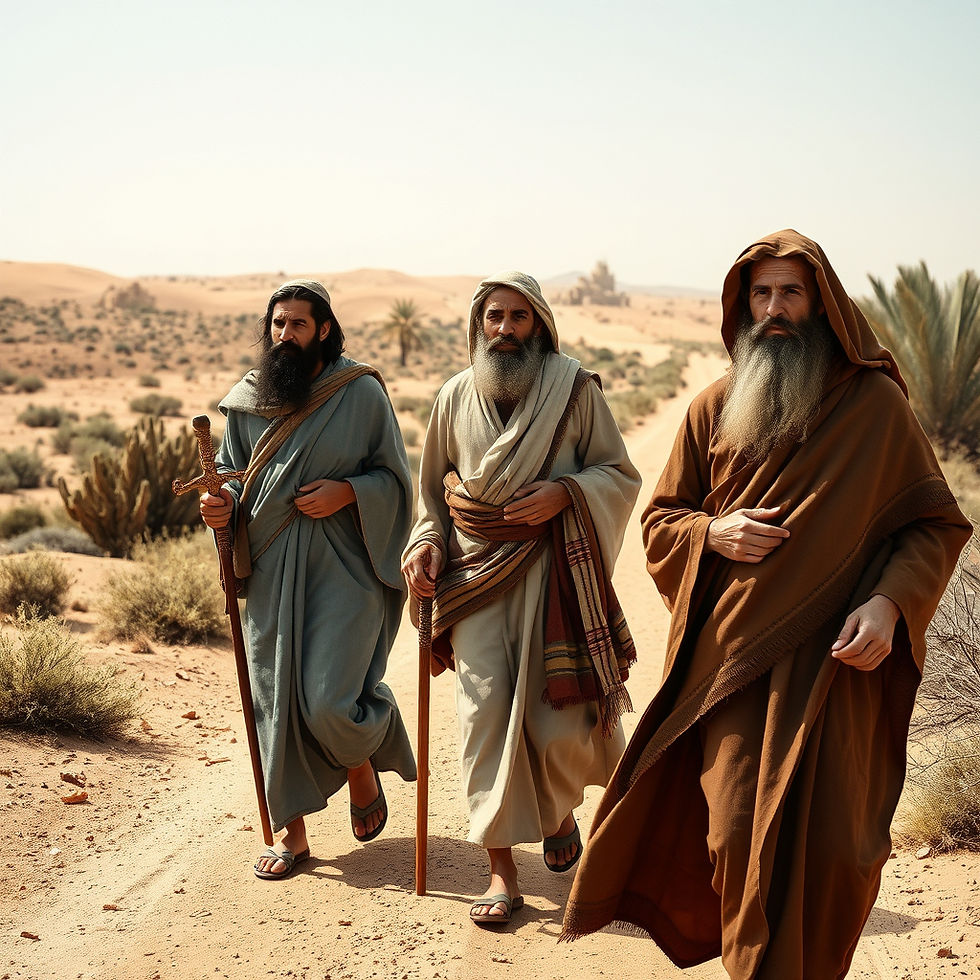March 5, 2025 -While He Watches?
- brooks16055
- Mar 5
- 2 min read

NUMBERS 19:1-21:35
Numbers 19:5 While he watches, the heifer is to be burned—its hide, flesh, blood and intestines.
I wondered what the significance of "While he watches" is. When you google it the AI answer is "In Numbers 19:1-21:35, the phrase "while he watches" signifies the constant, attentive oversight of God, particularly regarding the ritual of the red heifer used for purification, where every step must be performed precisely and under divine observation to ensure the ritual's effectiveness and purity; it emphasizes that God is actively monitoring the process and holding the Israelites accountable for their actions during this sacred act."
It seems to make sense but I don't usually take an AI response to a question, so I looked at my go to commentary, Enduring Word but I don't see any comment on it. I did a quick search or another one and didn't find any other commentaries that said anything about it either. But I did find this which I thought was interesting on Studylight.org
More laws about cleansing (19:1-22)
God had told the people earlier that any who came in contact with a dead body were to be considered ceremonially unclean. They had to be ceremonially cleansed with water before they could again mix in the community or join in public worship. (For the significance of the laws of cleansing see introductory notes to Leviticus 11:1-33.)
Israel now received instructions concerning the preparation of the water to be used in the cleansing ritual. First of all a healthy young cow was killed, after which its blood was ritually sprinkled. The meaning was that the animal, symbolically perfect, bore the consequences of sin and uncleanness. Its carcass was then burnt and its ashes were kept in a special place to be mixed with pure water (v. 17) to form the water of cleansing. All who took part in the killing and burning of the animal were themselves ceremonially unclean for the remainder of the day (19:1-10).The water of cleansing gained its symbolic power from the ashes of the sacrificial animal mixed with it. The ashes were proof of the animal’s death, by which the curse of sin was removed. In the cleansing ritual, the priest sprinkled the water over the person being cleansed (11-13). The tent of a dead person, along with its contents, was unclean, and the cleansing ritual again included sprinkling with the water of cleansing. Objects likely to contain some impurity, such as uncovered containers and even graves, made any person who contacted them unclean (14-19).Uncleanness spread to anyone or anything that the unclean person touched. This was further reason for people to make sure they obeyed all the laws relating to cleanness and uncleanness (20-22).
The cleansing ritual may have been useful in teaching that sin and death kept people from God’s presence, but it was unable to bring more than ceremonial cleansing. It cleansed externally in the sense that it removed the results of physical contact with unclean things, but it could not cleanse the conscience or remove the results of sin. Only the death of Jesus Christ could do that (Hebrews 9:13-14; Hebrews 10:22; 1 Peter 1:2; 1 Peter 1:2).




Comments